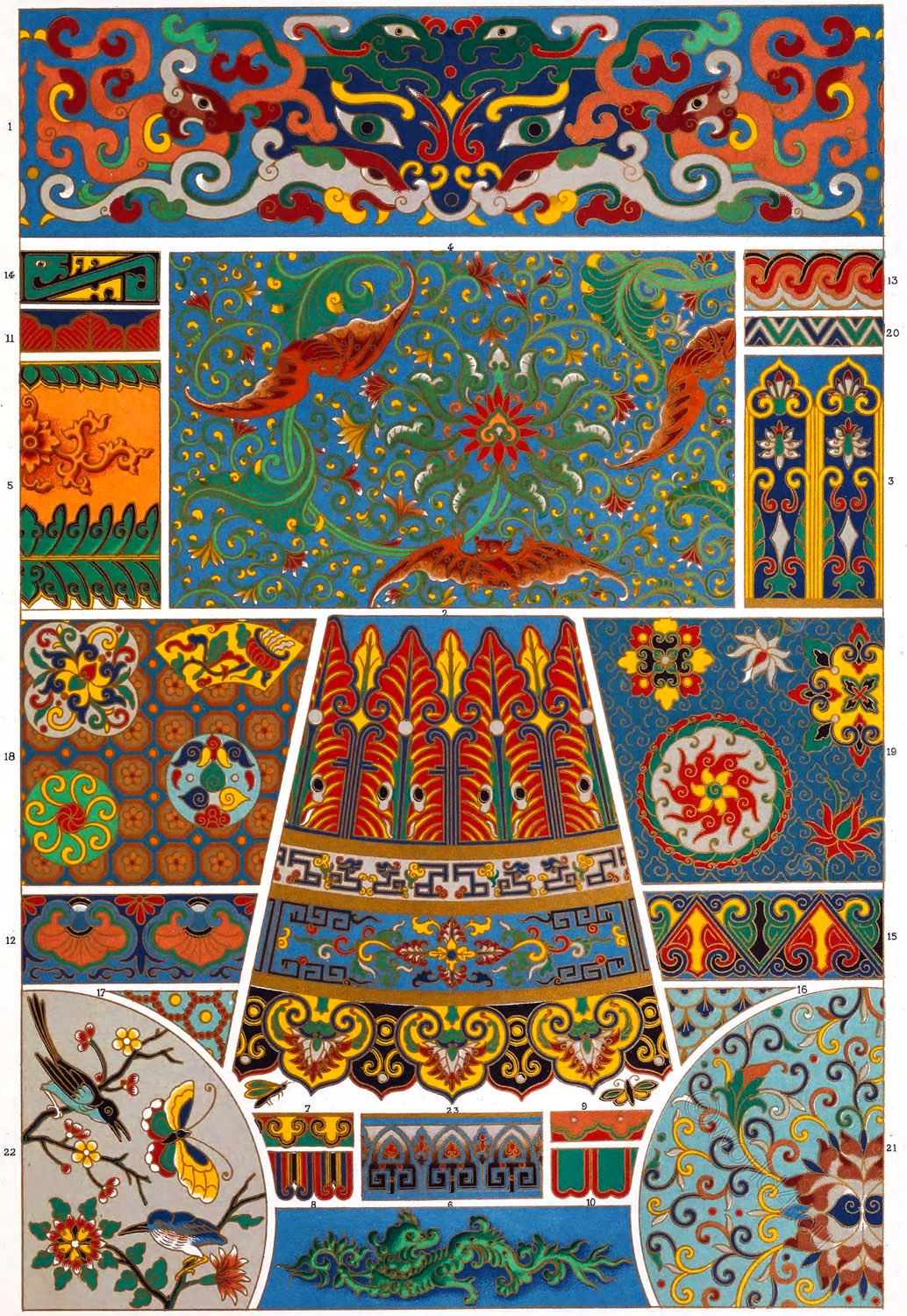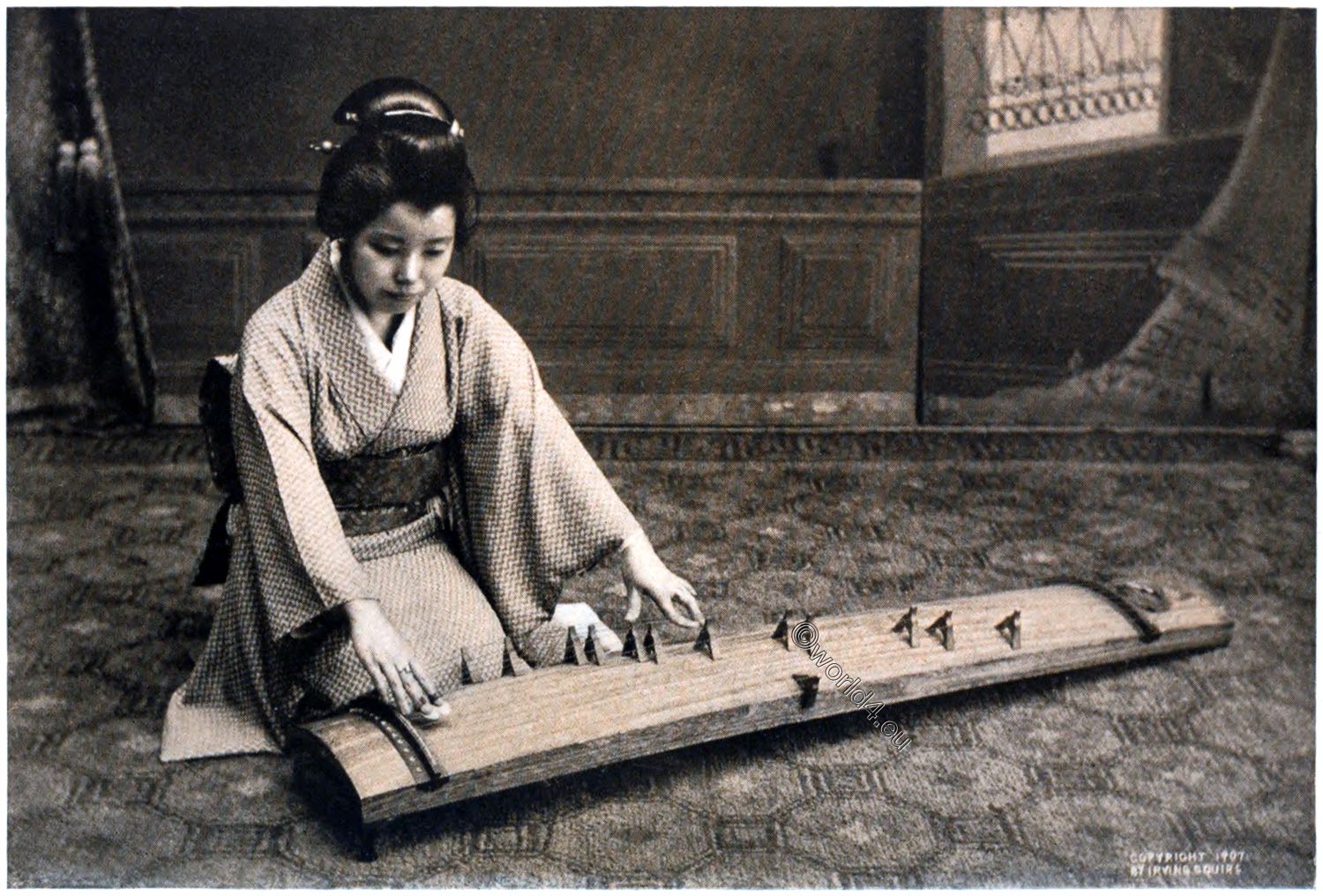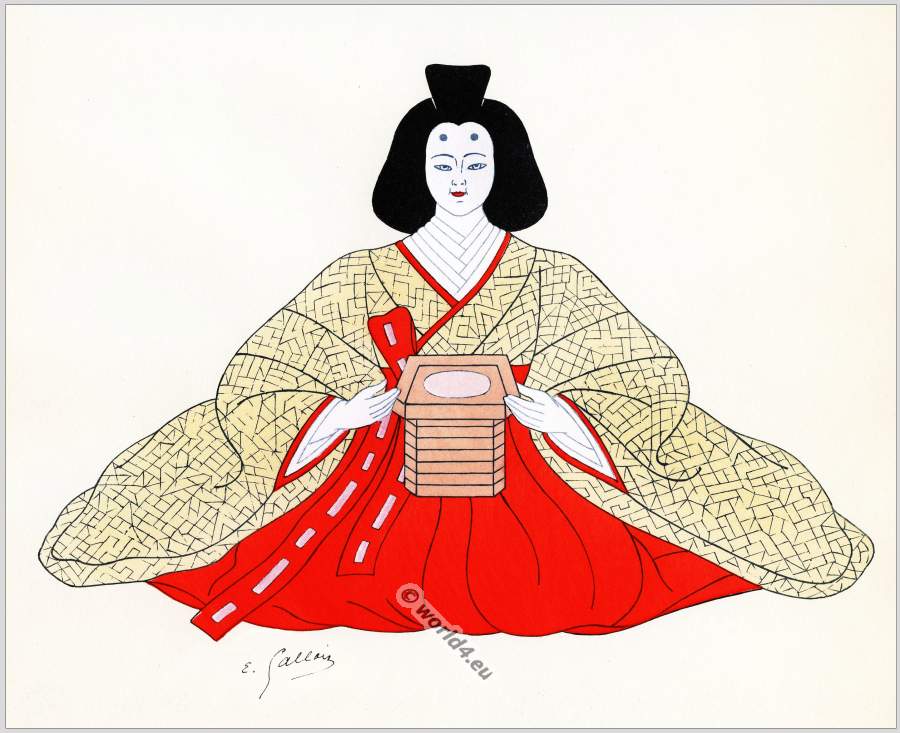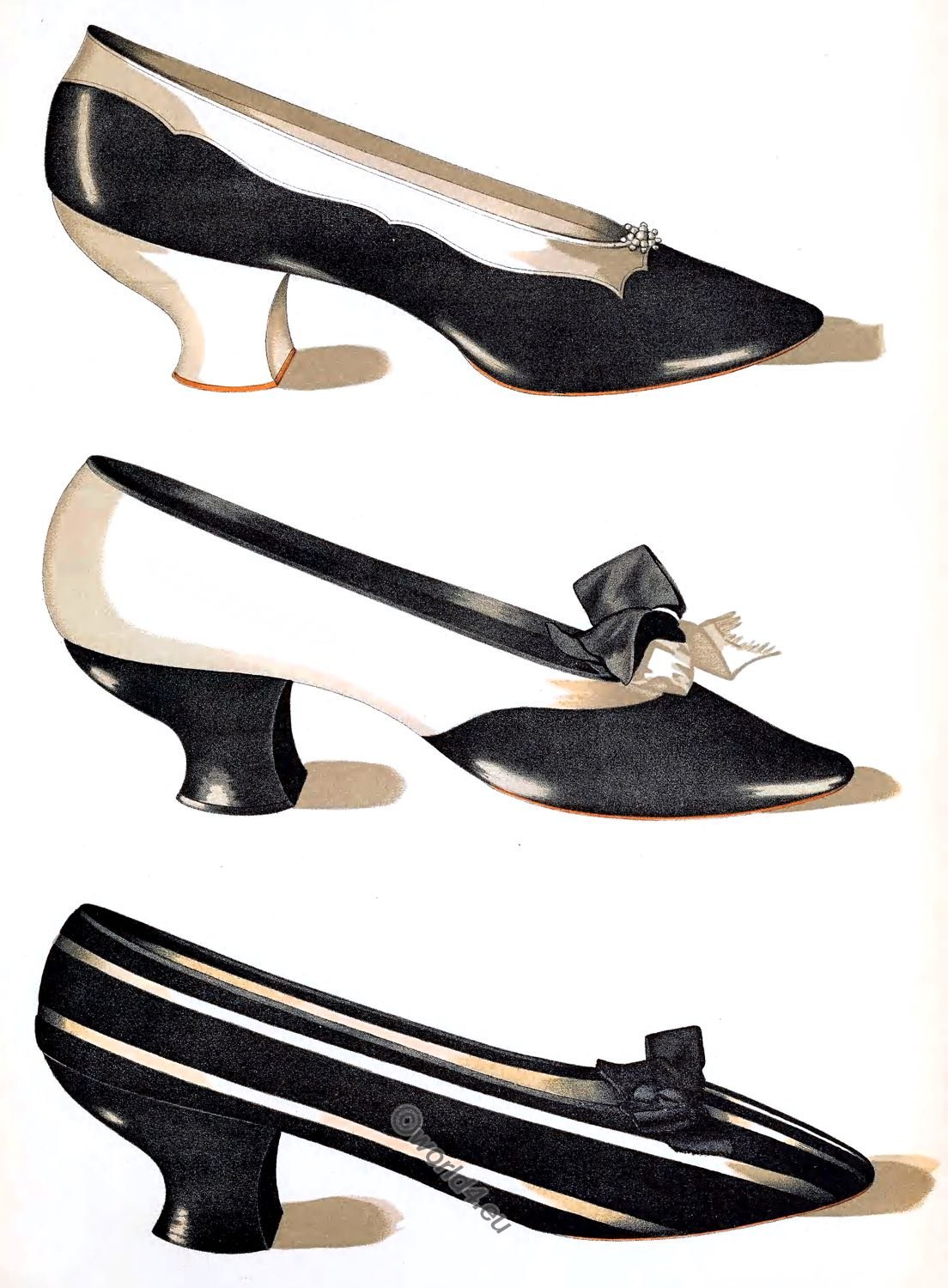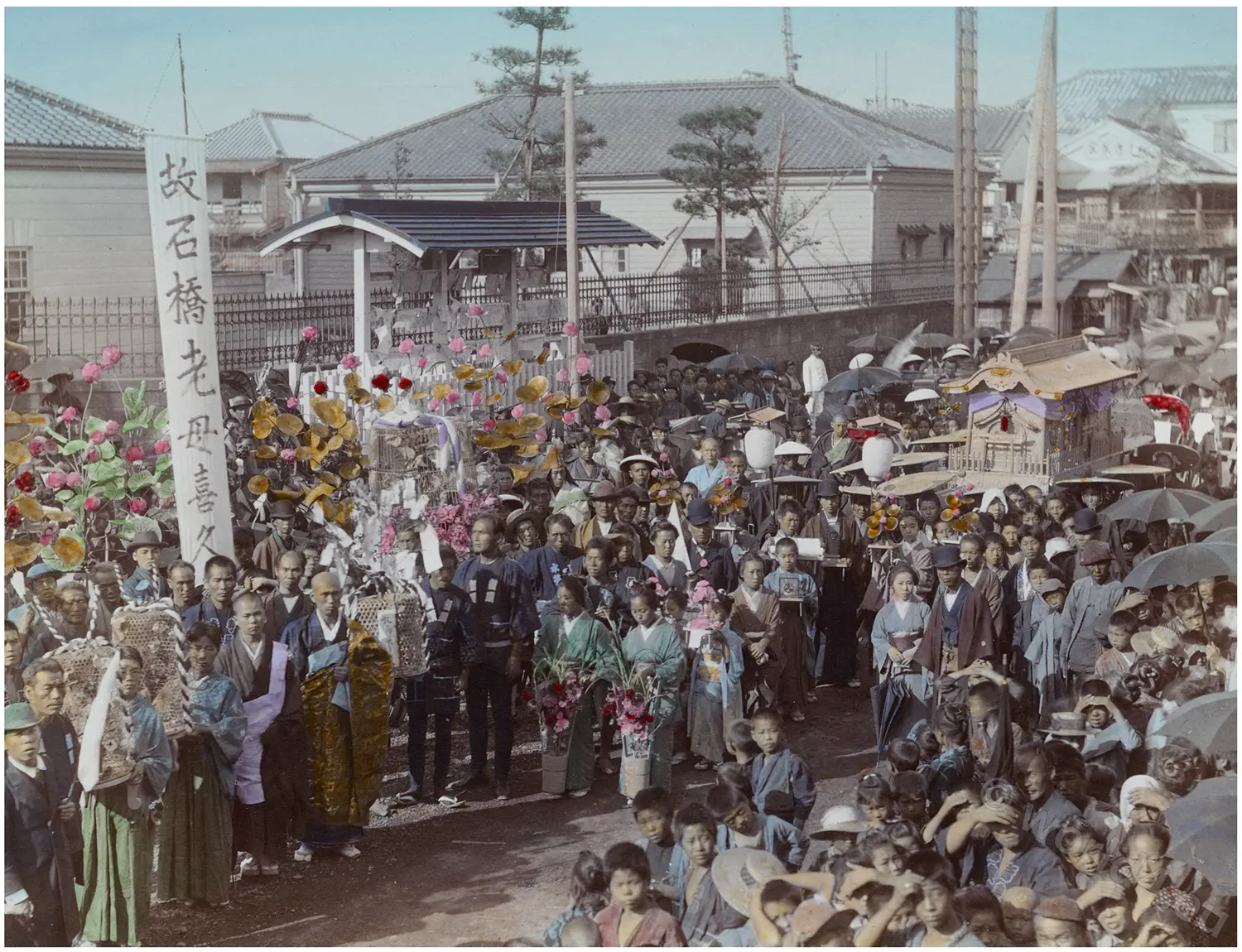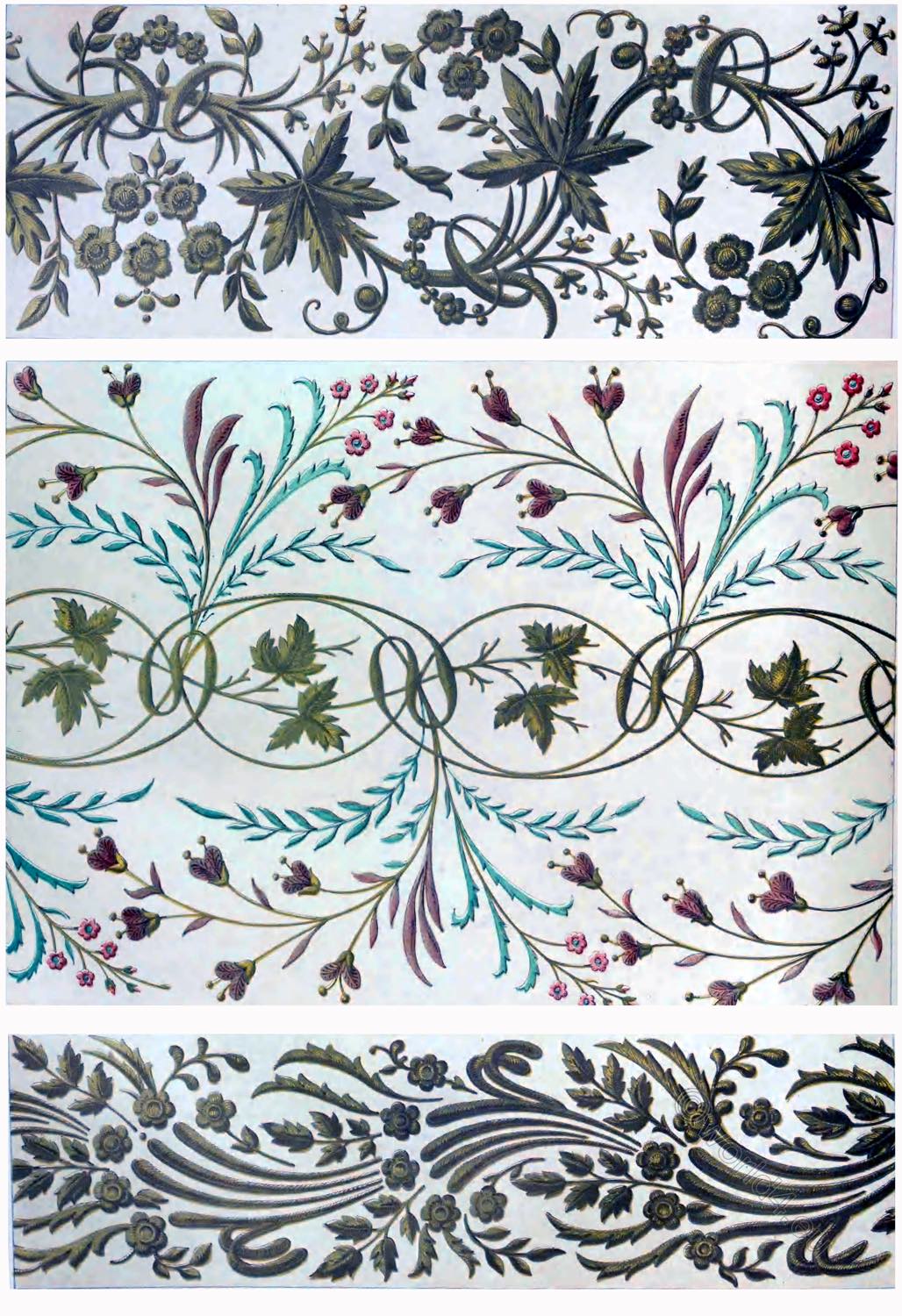Plate XI.
CHINESE AND JAPANESE ART.
CLOISONNÉ ENAMEL.
We have ventured to unite under one title, Chinese and Japanese, the various specimens of enamel collected in our plate. They do in fact belong to one and the same style, as the art of ornamentation in Japan was formed under the influence of the Chinese, and presents no special characteristic to account for the greater esteem in which its productions are held, except a higher perfection of workmanship and some superiority in individual taste.
In fact, it is very often difficult to distinguish Chinese productions of this kind from those that are produced in Japan, and it is frequently still more difficult to decide whether any particular piece belongs to ancient or to modern times. A few connoisseurs may profess to distinguish them by the method of their manufacture or the use of certain enamels; but the system of ornamentation has in general remained the same, and has changed the less from the circumstance that the most recent productions are merely copies of ancient ones.
M. Jacquemart, in his Merveilles de la Céramique, speaks thus on the subject: “The Chinese are skilful forgers and endeavour to profit by the taste of their fellow-countrymen for ancient and valuable works. It has sometimes happened in China, as with ourselves, that mere imitators have succeeded in obtaining for their works a reputation and value equal to those of the originals.”
CHINESE.
Nos. 1 to 3. — Collection of M. Ed. André. Exposition Orientate of 1869.
Nos. 4 to 11. — Manuscripts from the Bibliotheque Nationale. Cabinet des Estampes.
Nos. 12, 13. — Collection of M. Dutnit. Exposition Orientate of 1869.
Nos. 14, 15. — Manuscripts from the Bibliotheque Nationale.
Nos. 16, 17. — Collection of M. Baur. Exposition Orientale of 1869.
JAPANESE.
Nos. 18 to 21. — Collection of M. Coerli Dugléré. Exposition Orientale of 1869.
CHINESE.
Nos. 22, 28. — Collections of MM. Monbel and Dutuit. Exposition Orientale of 1869.
In Plate No. XII. the ornaments are on a green ground, and the effect is rather dull. Here the frequent use of blue grounds, and the occasional use of yellow, black, white, and red, tend to give the whole a more lively aspect. No. 23 is an example of pierced cloisonné enamel.
Source: Polychromatic ornament by Auguste Racinet. London, H. Sotheran and Co., 1877.
Discover more from World4 Costume Culture History
Subscribe to get the latest posts sent to your email.

